July 9, 2018
Sweet science: seamounts, samples and sediment
Estimated reading time: 0 minutes
BY: Alexandra Vance
Topics: Protect Marine Habitat
For a scientist, getting the chance to study seamounts is like being a kid in a candy store! While on board the Nautilus, many different experts are getting their hands wet with a variety of research opportunities. Here are just a few:
Seamount mapping
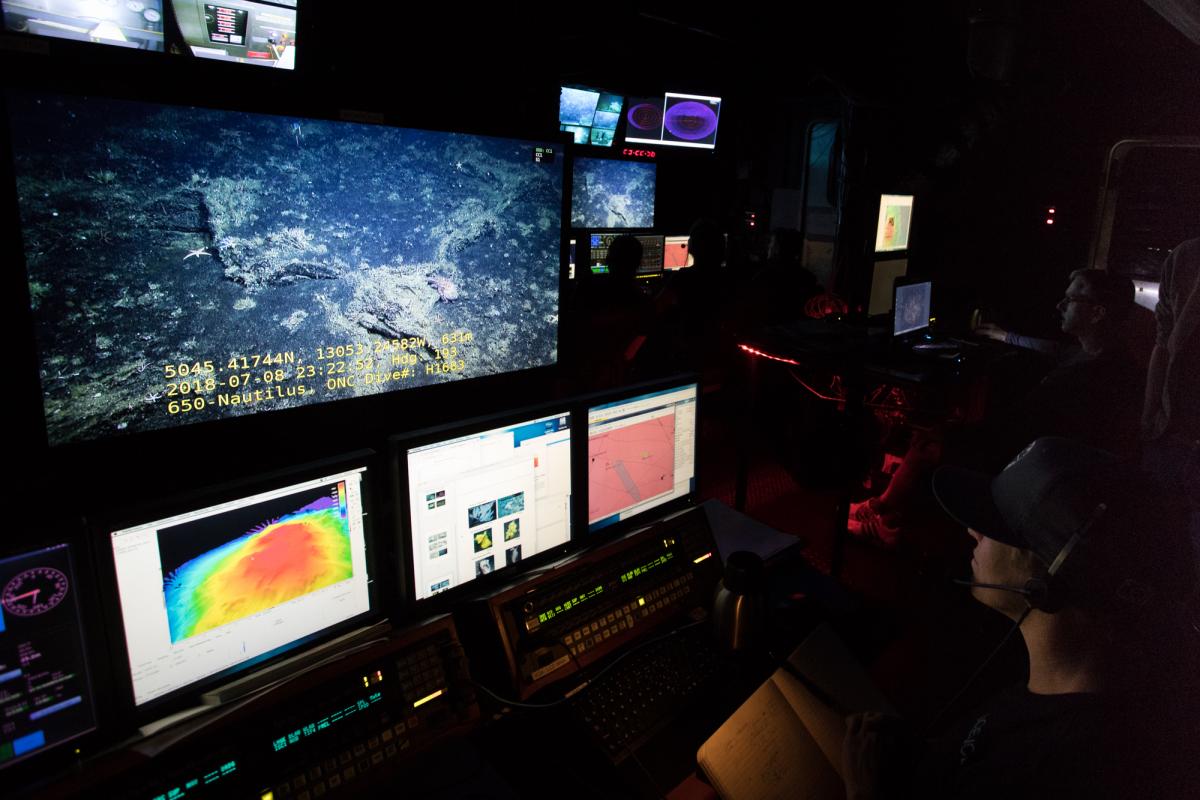
E/V Nautilus onboard visualization laboratory with researchers and technicians mapping the seafloor with live video (top left), multi-beam echosounder (bottom left) and other instruments to collect information about the seafloor. Photo Credit: Northeast Pacific Seamount Expedition Partners
Since you can’t always send a human down to the bottom of the seafloor, scientists aboard the Nautilus are using a multi-beam echosounder. It’s a type of sonar that emits soundwaves in a fan-shape, from the hull of the vessel to the seafloor and back again. The information collected by this sonar is useful for the real-time identification of features on the bottom of the ocean, helping scientists locate seamounts, hydrothermal vents and even shipwrecks!
eDNA
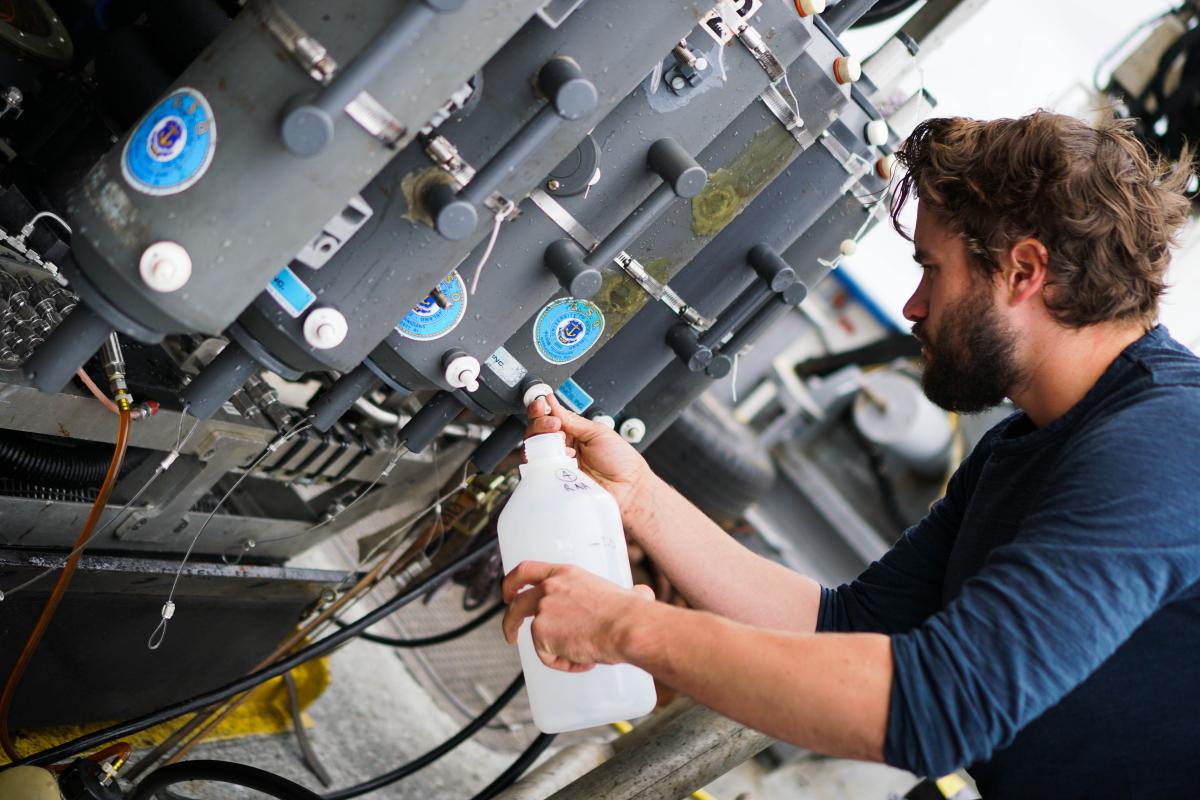
Brett, a PHd student from the University of Victory transfers water samples collected from the ocean depths from the ROV to a Niskin bottle for eDNA analyses back in the wet-lab. Photo Credit: Fisheries and Oceans Canada
Environmental DNA, or eDNA, is a new and exciting way to find out exactly what species live in the ocean by collecting a water sample instead of a sample directly from the plants or animals themselves. DNA is naturally shed from marine animals through skin, feces, mucus and more. It will stay in the water where they have interacted for a certain amount of time, with the DNA slowly dissipating over time until all traces of the animal are gone. By simply collecting water, scientists can tell us what animals have passed through the area! Isn’t that cool??
Sediment sampling
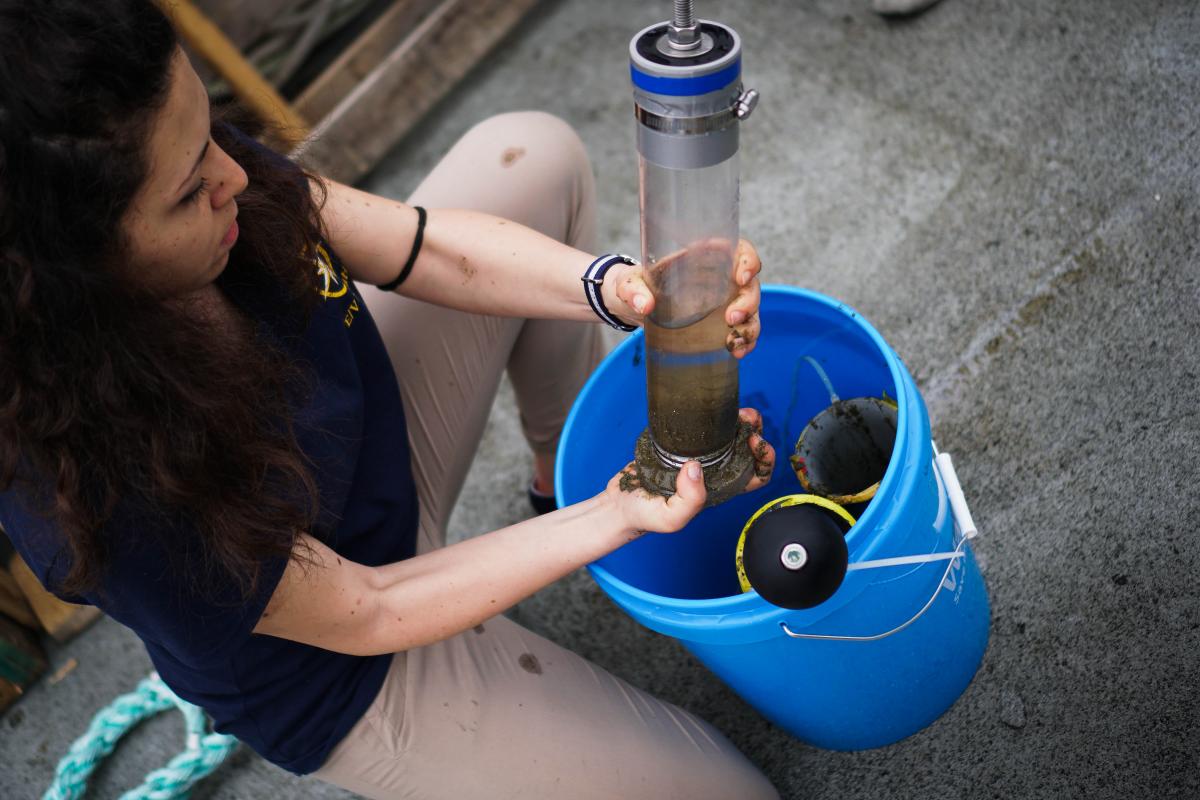
Alessia, a PHd student from Memorial University, extracts sediment from a push core to sub-sample the contents back in the wet-lab. Photo Credit: Fisheries and Oceans Canada
Similar to how ice cores help scientists study the Arctic environment over time, or how tree rings can tell us about the Earth’s conditions throughout the tree’s life, marine sediment samples help scientists figure out the history of the ocean and how its changed over time. Sediment samples are taken with push cores. This involves pushing a tube into the soft seafloor, getting a sample and studying the many organisms living in and on the seafloor as well as the chemistry and geology at the bottom of the ocean!
Specimen samples
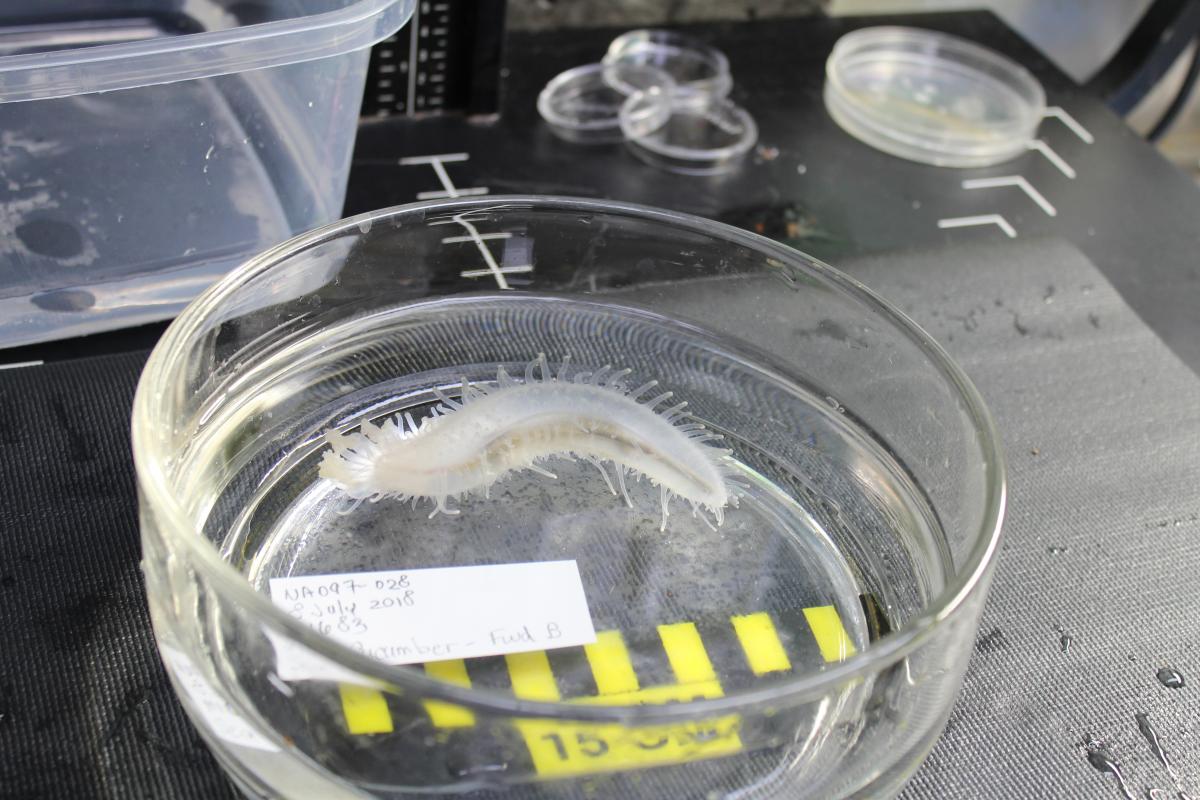
A sea cucumber collected on Dellwood Seamount is being photographed and catalogued in the wet-lab for further identification and genetic analyses once the team gets back to shore. Photo Credit: Northeast Pacific Seamount Expedition Partners
Scientists rely on the collection of specimens for species identification and to learn about their diet, lifespan, growth and reproduction. Collections can either be a small biopsy, such as a branch of coral or a piece of a sponge, or the entire animal itself, like a sea star. On this expedition, scientists are collecting a small number of samples that represent the animals found on seamounts. This information allows us to better implement marine protection measures to ensure the long-term health of the entire ecosystem. Many of the specimens collected during this expedition will be shared with museums and research projects across the country!
Plankton sampling
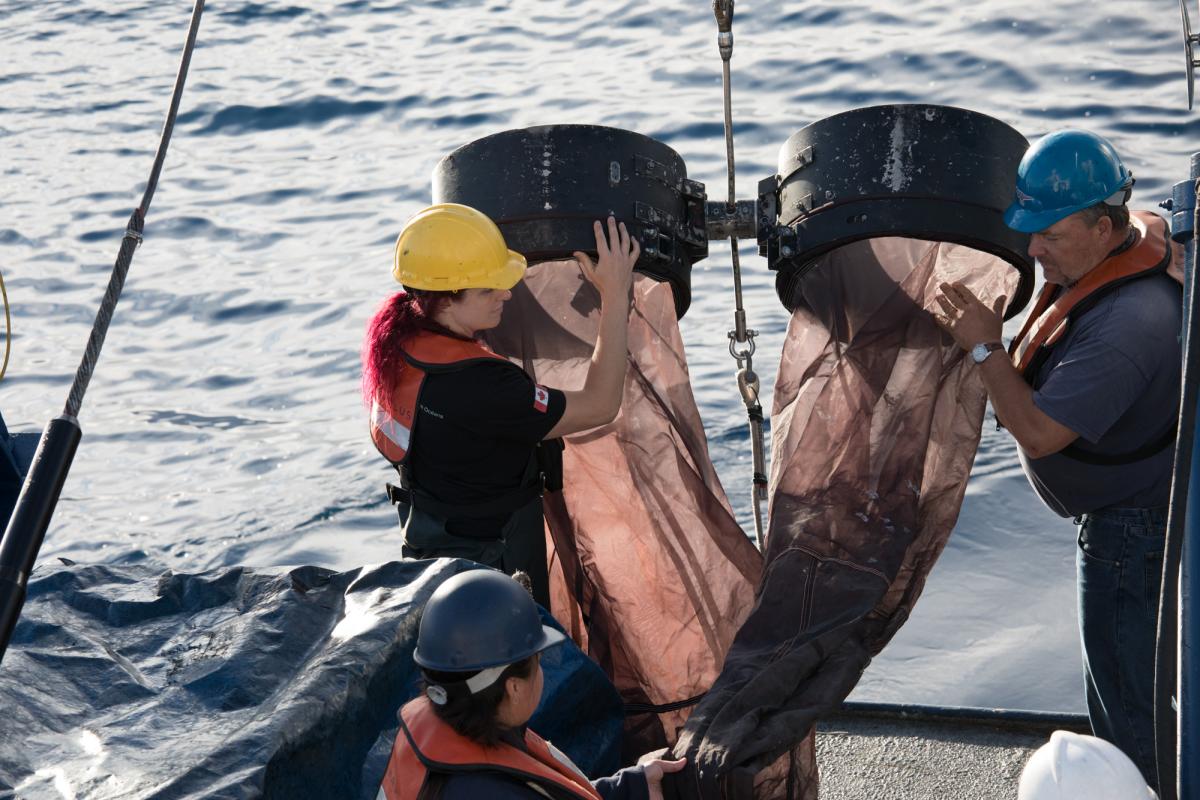
Researchers carefully handle and wash the bongo nets to gather all the collected plankton into jars for further analyses back in the wet-lab. Photo Credit: Northeast Pacific Seamount Expedition Partners
Plankton are the engines that drive the ocean’s food web. Phytoplankton are primary producers, meaning they get their energy from the sun – just like plants on land! Zooplankton are tiny animals that graze on phytoplankton, which are in turn eaten by larger animals like fish and whales. Scientists on this expedition will use a bongo net to collect and measure the amount of plankton, allowing them to understand the overall productivity and health of the ocean in several areas. Did you know that phytoplankton are responsible for creating 50 to 80 per cent of the world’s oxygen? That means every other breath you take is made by the ocean!
Tune in to ProtectOceans.ca to explore the seafloor with our science team, ask them questions and learn about what we’re seeing in real-time.
MOST RECENT
April 24, 2025
March 6, 2025
February 3, 2025
January 22, 2025
Celebrating New Beginnings in 2025: Four Right Whale Calves Spotted Off Florida Coast

